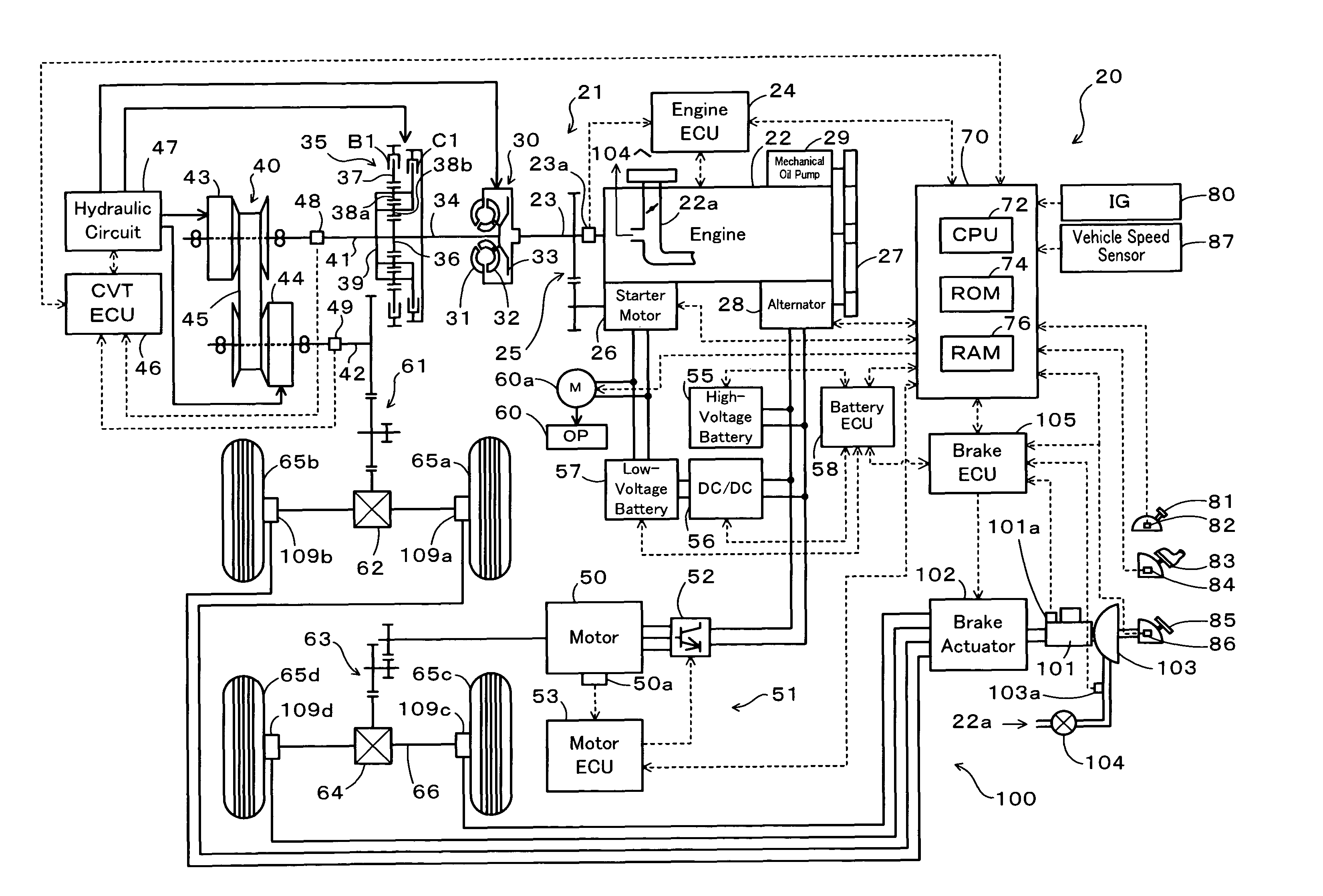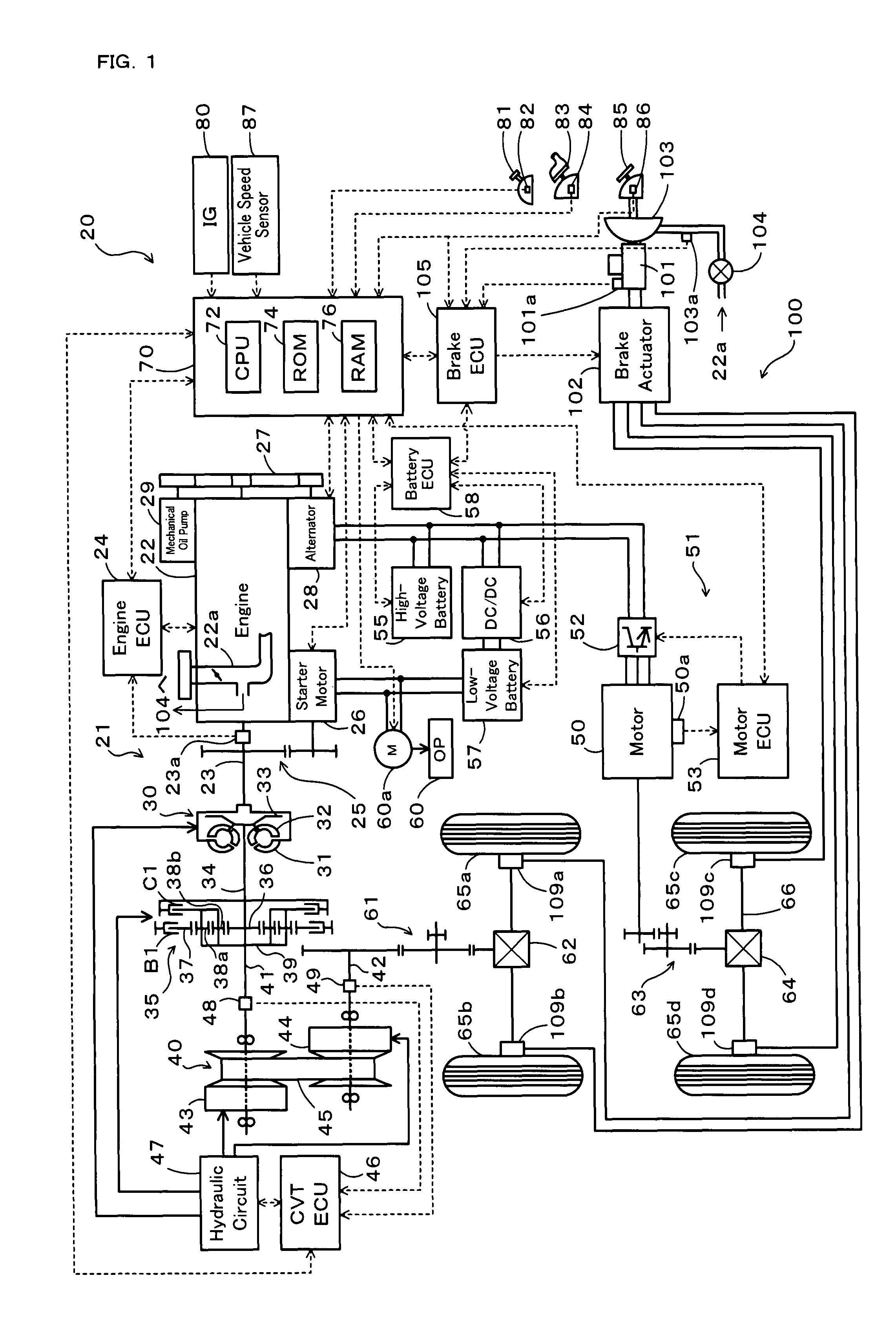Vehicle and control method of vehicle
a technology of vehicle and control method, which is applied in the direction of propulsion parts, propulsion using engine-driven generators, braking components, etc., can solve the problems that the booster cannot utilize the negative pressure at the stop of the internal combustion engine, and the driver may therefore feel uncomfortable, so as to reduce the negative pressure, accurately set the braking force demand, and effectively use the regenerative braking force
- Summary
- Abstract
- Description
- Claims
- Application Information
AI Technical Summary
Benefits of technology
Problems solved by technology
Method used
Image
Examples
Embodiment Construction
[0026]One mode of carrying out the invention is described below as a preferred embodiment.
[0027]FIG. 1 schematically illustrates the configuration of a hybrid vehicle 20 of the invention. The hybrid vehicle 20 of the embodiment has a front wheel driving system 21 for transmission of output power of an engine 22 to front wheels 65a and 65b via a torque converter 30, a forward-backward drive switchover mechanism 35, a belt-driven continuously variable transmission (hereafter referred to as ‘CVT’) 40, a gear mechanism 61, and a differential gear 62, a rear wheel driving system 51 for transmission of output power of a motor 50 to rear wheels 65c and 65d via a gear mechanism 63, a differential gear 64, and a rear axle 66, an electronically controlled hydraulic braking system (hereafter referred to as ‘HBS’) 100 for application of braking force to the front wheels 65a and 65b and to the rear wheels 65c and 65d, and a hybrid electronic control unit (hereafter referred to as ‘hybrid ECU’) 7...
PUM
 Login to View More
Login to View More Abstract
Description
Claims
Application Information
 Login to View More
Login to View More - R&D
- Intellectual Property
- Life Sciences
- Materials
- Tech Scout
- Unparalleled Data Quality
- Higher Quality Content
- 60% Fewer Hallucinations
Browse by: Latest US Patents, China's latest patents, Technical Efficacy Thesaurus, Application Domain, Technology Topic, Popular Technical Reports.
© 2025 PatSnap. All rights reserved.Legal|Privacy policy|Modern Slavery Act Transparency Statement|Sitemap|About US| Contact US: help@patsnap.com



